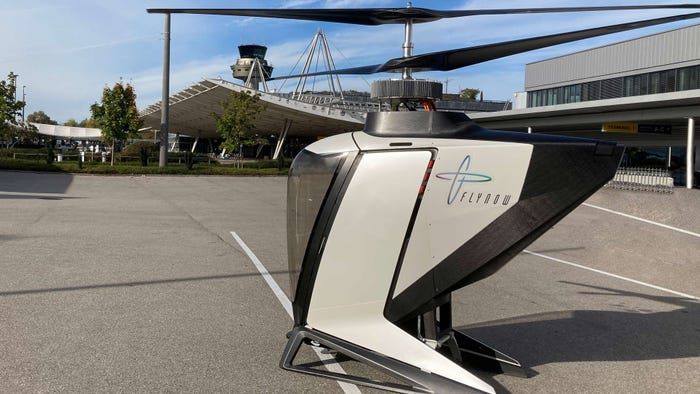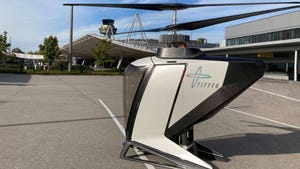In Person with Olli, Your New Autonomous Vehicle ValetIn Person with Olli, Your New Autonomous Vehicle Valet
A self-driving vehicle from Local Motors featuring IBM Watson technology responds to normal voice commands.
September 19, 2016

By Machine Design Staff
This year at the International Manufacturing and Technology Show (IMTS) 2016, Local Motors had a hit on their hands with Olli. My editor-in-chief Nancy Friedrich and I approached the company display and saw the line that had formed. These people were anxiously waiting to take their turn to ride Olli, Local Motors’ new autonomous vehicle. IMTS had set up the bottom portion of the North Building to be a track for Olli to ride around and show off its autonomous skill.
Nancy and I stepped into Olli and went on a drive of its pre-programmed route. For purposes of the show and due to the lack of GPS inside the building, the drive was semiautonomous. This means that the vehicle was driven once around its route and then programmed to repeat the same route. The ride was smooth, handling turns and the obstacles placed in its path with ease. Inside the vehicle there was space for six people seated and plenty of standing room left for car-pooling trips. The vehicle maintained a low speed and personally it was a comfortable ride. You forget that no one is at the helm of the vehicle. Once outside of the vehicle, it went on its next run and I stepped into the path of the vehicle. It stopped automatically, waited for me to clear the path, and slowly started driving again until it reached its top programmed speed.
Adam Kress, director of public relations for Local Motors, described to us their future plans for Olli. They plan to introduce it into dense urban areas. This could be from major cities like Chicago or New York, to college campuses and amusement parks. With the technology built into Olli, one could call upon Olli to pick them up. An integrated mobile app can be used to call Olli and track its current location. The vehicle has built-in GPS that can be used for it to travel from point A to point B. Using LIDAR technology along with short- and long-range sensors, Olli can navigate its surroundings. Inside and outside cameras transmit video back to a security location to monitor the conditions inside and outside. Olli is made of an aluminum chassis with carbon-fiber body panels, along with several 3D-printed parts, including the wheel wells, fenders, and interior kick panels. The pilot programs for Olli are set to launch at the University of Las Vegas, Maimi-Dade County, Washington D.C., and Denmark.
This is not Local Motors’ first time in the spotlight at IMTS. Back in 2012, the company unveiled the Rally Fighter, which was built right on the floor of IMTS. This highlighted the strength of its micro-factories and being able to build efficiently. In 2014, it showcased Strati, a 3D-printed car. Using 3D printing techniques and additive manufacturing, Local Motors was able to construct an entire vehicle in under 48 hours. Then in 2015, it built the world’s first 3D-printed highway-capable concept vehicle, the LM3D Swim. Building on top of the frame of a BMW i3, the interior and exterior are 3D printed. The vehicle itself is also 100% electric, rear-wheel drive, automatic single-speed transmission, with a range of 100 miles, and a top speed of 50 mph. Entering the fray of American car manufacturing is a challenge. Considering all the heavy players in the field, Local Motors is pushing the envelope embracing the emerging technologies of today like 3D printing and self-driving vehicles.
This article originally appeared on our sister site Machine Design.
You May Also Like
.jpg?width=700&auto=webp&quality=80&disable=upscale)





